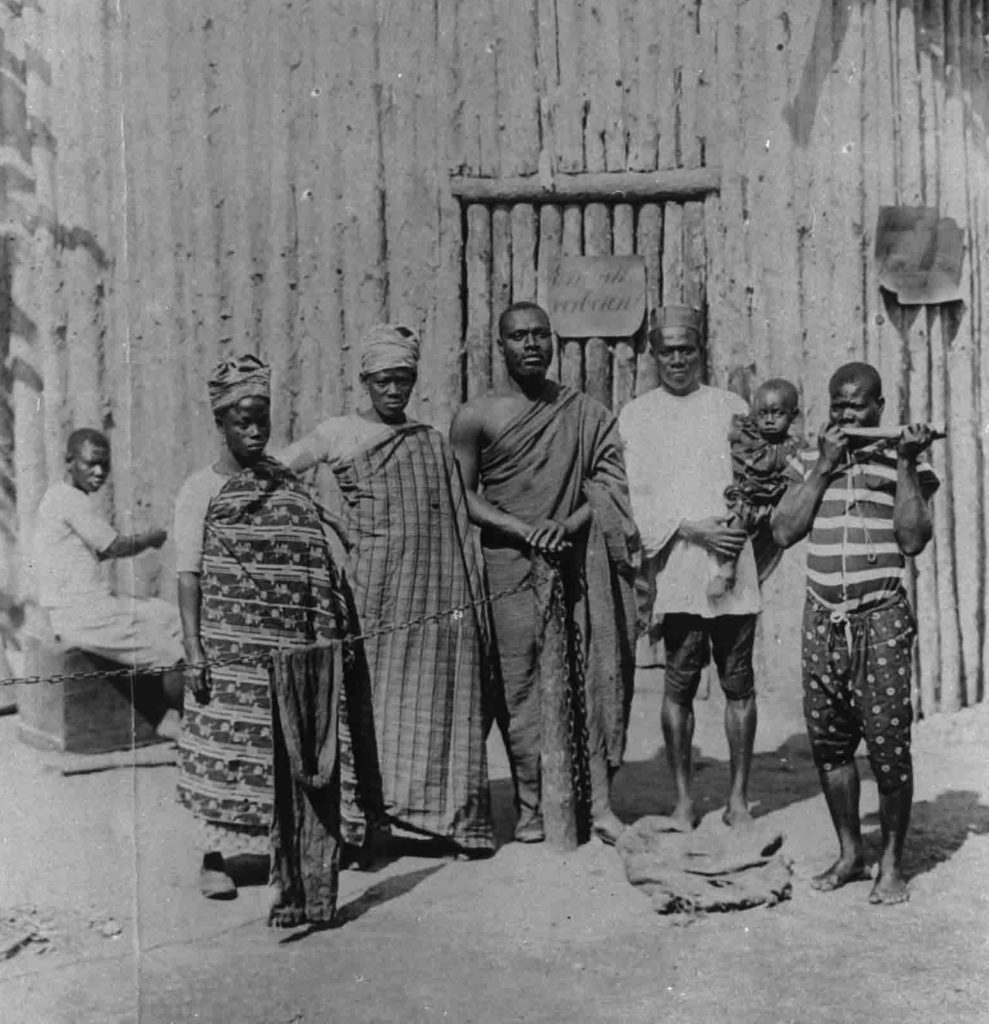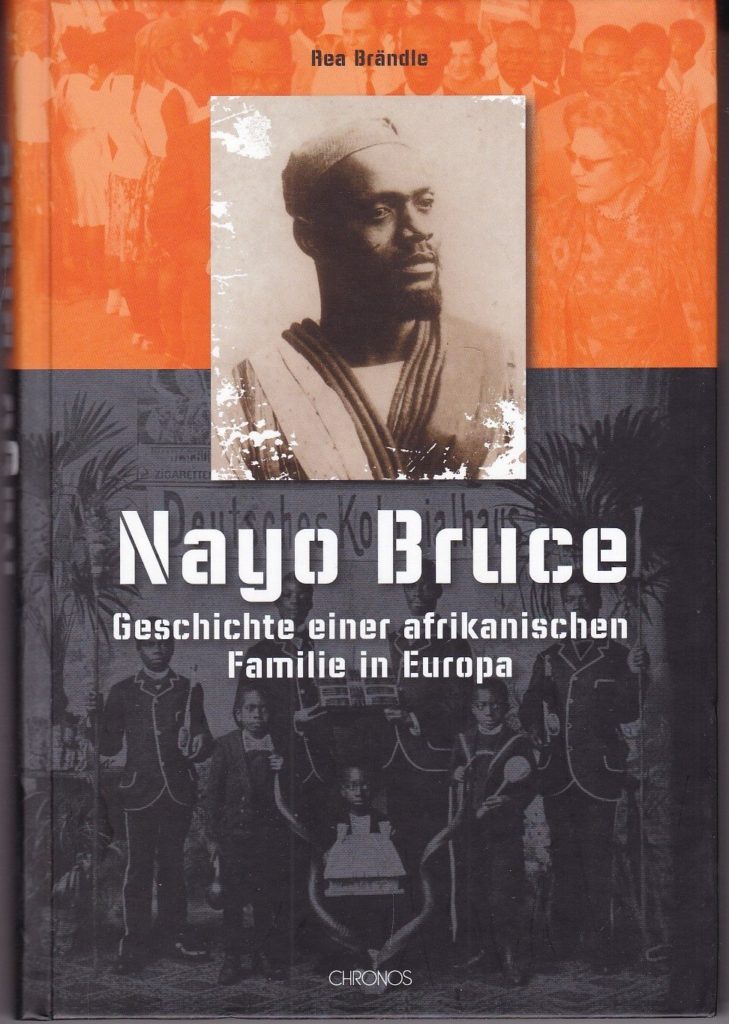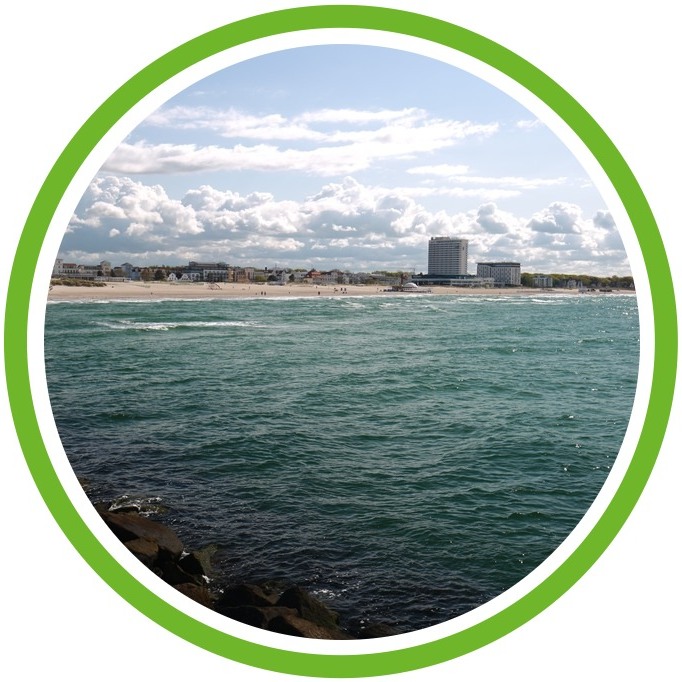Not in the mood for reading?
You can listen comfortably to all the information here and while exploring the region.
Life of PoC in Rostock
The Bruce family
In her book “Nayo Bruce. A Story of an African Family in Europe.“, published in 2007, Rea Brändle follows the extraordinary life of Nayo Bruce and his children for more than 100 years. On their journey through Europe, the family stopped here in Warnemünde. Their story gives us the opportunity to get an insight into the life of People of Color (PoC) in Germany in the first half of the 20th century.

Frankfurt am Main, Bildnummer: 101,3501-0)
Nayo Bruce
Nayo Bruce was born in 1859 in what is now Togo. He came from a ruling class and attended a missionary school run by missionaries in Bremen. Because of his talent for languages, he worked as an interpreter for the British colonial administration. In 1896 he fulfilled his wish and traveled to Berlin on the occasion of the First German Colonial Exhibition in Berlin, where he worked as a performer in one of the then popular “Völkerschauen”. Against resistance, he managed to stay in Germany and eventually even became the leader of his own ensemble, with which he performed in 222 cities across Europe until his death in 1919. In 1902 his ensemble called “Togomandigo” played in the Schumacher Hotel in Warnemünde. On this occasion, Nayo Bruce consigned his son Pietro Bruce and 2 years later also his younger half-sister Regina, to Baron George von Fircks’ care.

Regina Bruce
Regina and Pietro grew up with the Fircks in Warnemünde. It was Regina’s wish to become a teacher, but as a black woman she had little chance of a job at a German school. Therefore, in 1926, she and her younger sisters Annie and Lisa Bruce trained as missionaries. However Regina Bruce was socialized in Europe and did not move around Togo with ease. This led to conflicts with the mission leadership. The situation escalated when she became pregnant without being married in 1928. The father Jonathan Savi de Tové himself was a teacher at the Bremen missionary school in Togo. Regina Bruce was fired as a bad role model. Savi de Tové then resigned himself, Annie and Lisa Bruce wanted to return to Germany. The Bremen mission denied this, on the grounds that she would not be employed by anyone in Germany. Savi de Tové became more and more involved in the independence movement and left Regina Bruce alone with the five children. After Togo’s independence, he worked as an ambassador in the old Federal Republic in Bonn, where Regina Bruce accompanied him. After the coup in Togo in 1963, he and Regina Bruce were granted asylum in Germany. Regina Bruce began working as a leader for the Togolese Red Cross. However, both moved back to Togo. Her youngest son Jean-Lucien Savi de Tové was Minister for Trade and Crafts of the Republic of Togo from 2005 to 2007.
Pietro Bruce
Unlike his sister, Pietro Bruce stayed in Germany throughout his life. At the age of 20 he began to take on small acting roles in several movies. Finally, he fulfilled his dream and worked as a chef in Berlin after completing an apprenticeship in one of the best hotels in Rostock. Pietro Bruce became extremely successful and finally opend his own hotel on the German island Rügen. When guests stayed away relating to the economic crisis in the early 30s Pietro Bruce had to close the hotel in 1933. He then found employment in the Hotel Ostseeblick in Heringsdorf as a chef, but was soon dismissed because the regular customers of the restaurant did not want to accept a black chef. Pietro was able to continue working as a chef in Berlin, but after the death of his wife Charlotte, he became a more reserved personality. His wife presumably committed suicide because of the increasing discrimination. Pietro Bruce also committed suicide on May 16, 1949.
The stories of Nayo, Regina and Pietroshow the limits of action for PoC at the beginning of the 20th century. They all had to struggle with the specific resistances PoC were confronted with. Nevertheless they managed to assert themselves against them. Economic independence was not a matter of course for black people back then. However, it was not possible for them to break away from colonial ties. In his “Völkerschauen”, Nayo Bruce also reproduced the widespread racist stereotypes to his audience.
Even if the situation of PoC has improved, they are still confronted with colonial thought structures and racist stereotypes today, in Germany. That is why PoC initiatives have been founded in many places in Germany, including the Rostock based „Initiative Schwarzer Rostocker*innen“.
Sources and for reading
- Picture 1: Bildarchiv der Deutschen Kolonialgesellschaft, Universitätsbibliothek Frankfurt am Main, Bildnummer: 101,3501-0
- Picture 2: Chronos Verlag
- Rea BRÄNDLE, Zwei Afrikaner aus Warnemünde, in: Der Freitag 05.09.08, in: http://www.freitag.de/autoren/der-freitag/zwei-afrikaner-aus-warnemunde (abgerufen am 28.04.2020)
- Rea BRÄNDLE, Zwischen den Welten – Die Geschwister Regina, Annie und Lisa Bruce in Togo, in: Marianne BECHHAUS-GERST und Mechthild LEUTNER, Frauen in den deutschen Kolonien, S. 156-164
- Manuel ARMBRUSTER, “Völkerschauen” um 1900 in Freiburg i. Br. -Kolonialer Exotismus im historischen Kontext, http://www.freiburg-postkolonial.de/pdf/Armbruster-Voelkerschauen-in-Freiburg.pdf (abgerufen 28.04.2020)
- Josch LAMPE, »Meine Tochter […] soll alles lernen, was die weissen Mädchen lernen…« – Schwarze‹ Perspektiven auf Deutschland um 1900, in: Textpraxis. Digitales Journal für Philologie, 02.2015, in: https://www.textpraxis.net/josch-lampe-schwarze-perspektiven-auf-deutschland-um-1900 (abgerufen 28.04.2020)
- Erich VIERING, Von Lomé über Brüssel nach Kiew – Die Geschichte einer togoischen Schaustellerfamilie, in: Mitteilungen der Norddeutschen Mission Nr. 2, 04.2008, in: http://www.norddeutschemission.de/fileadmin/user_upload/norddeutschemission/dokumente/Mitteilungen/NM_Mitteilungen_02_2008.pdf (abgerufen 28.04.2008)
- Jürg BÜRGI, Berufsneger Nayo, in: https://www.juerg-buergi.ch/resources/Aktuell/Entwicklungspolitik/Nayo-Bruce.pdf, 2007 (abgerufen 28.04.2020)
- Stefan OTTO, Die tingelnde Togotruppe; in: Neues Deutschland, 20.03.2009, in: https://www.neues-deutschland.de/artikel/145889.die-tingelnde-togotruppe.html (abgerufen 28.04.2020)
Book Recommendation
- Rea Brändle, Nayo Bruce. Geschichte einer afrikanischen Familie in Europa, Zürich 2007.
- Über das interessante Leben von Kwassi Bruce, dem Bruder von Regina und Pietro Bruce: https://www.verwobenegeschichten.de/menschen/kwassi-bruce/denkschrift-von-kwassi-bruce-an-die-kolonialabteilung-im-auswaertigen-amt/
- Zur Situation von Peope of Color in Deutschland heute:
Alice HASTERS, Was weiße Menschen über Rassismus nicht hören wollen, aber wissen sollten, 2019



